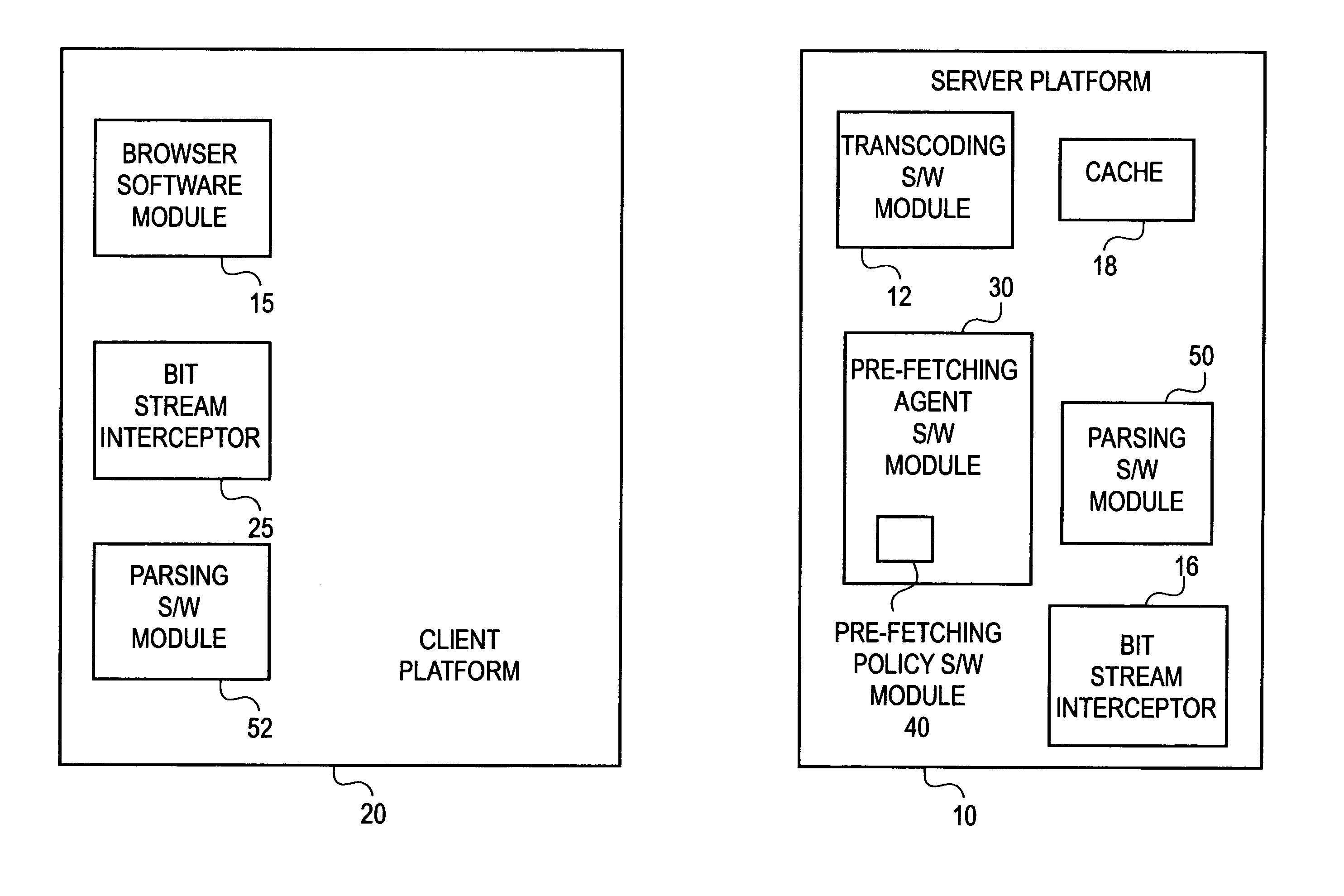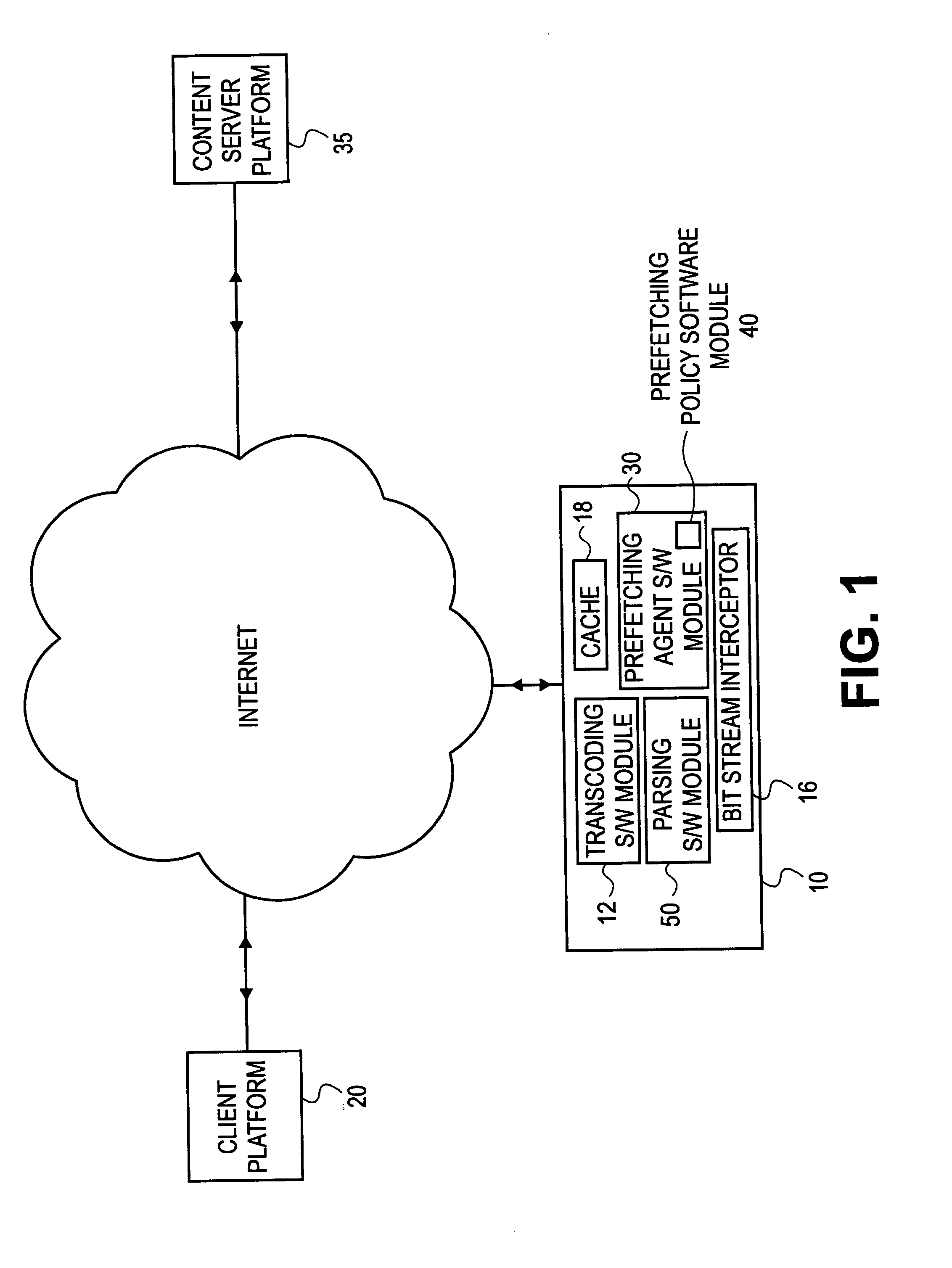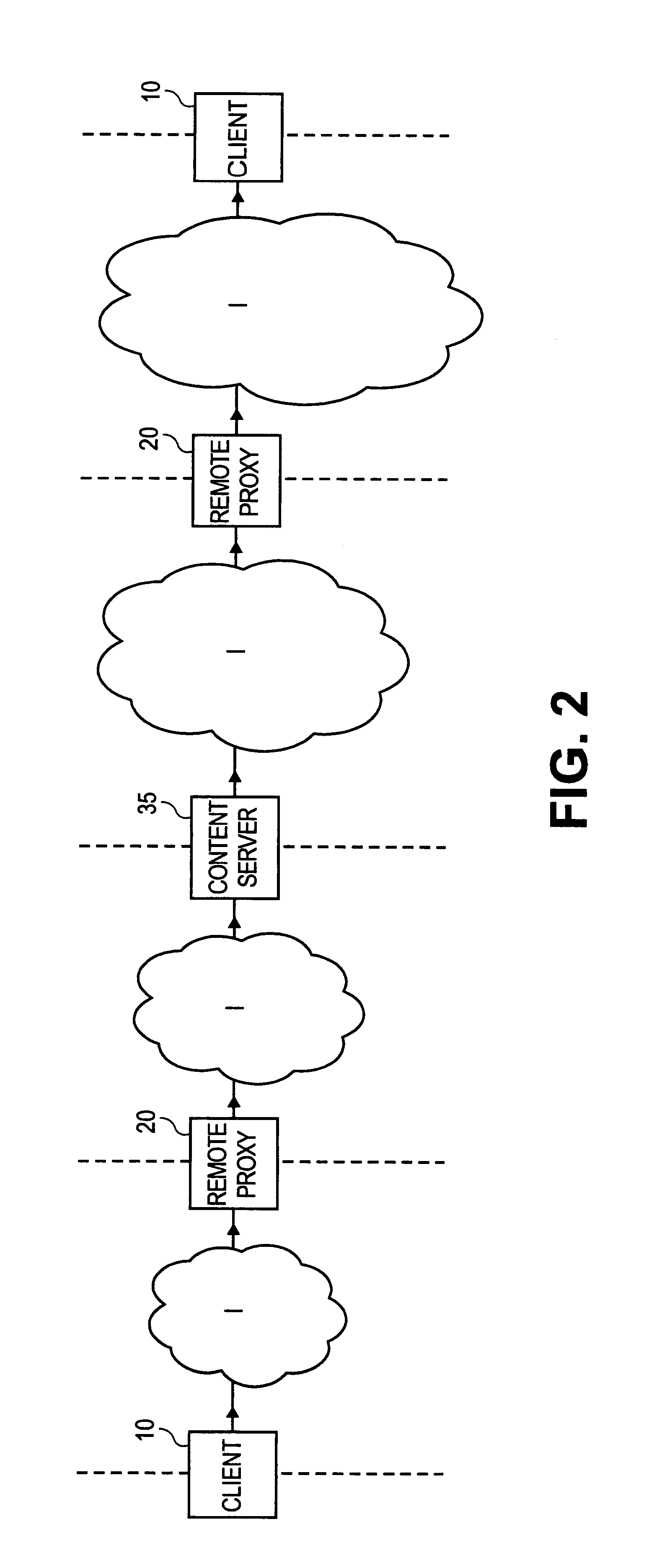Method of proxy-assisted predictive pre-fetching with transcoding
a predictive pre-fetching and proxy technology, applied in the field of servers, can solve the problems of affecting the performance of the proxy cache, the delay or latency perceived by users until, and the undesirable adverse effect of the proxy cache by the auto-fetch utility,
- Summary
- Abstract
- Description
- Claims
- Application Information
AI Technical Summary
Benefits of technology
Problems solved by technology
Method used
Image
Examples
Embodiment Construction
[0013]The embodiments of the present invention may be implemented according to the general architecture described, for example, in U.S. patent application Ser. No. 08 / 772,164, titled “System for Enhancing Data Access Over a Communications Link”, by M. Tso, J. Jing, R. Knauerhase, D. Romrell, D. Gillespie and B. Bakshi, filed on Dec. 20, 1996, now U.S. Pat. No. 6,185,625; U.S. patent application Ser. No. 08 / 799,654, titled “System for Scaling Image Data”, by M. Tso D. Romrell and S. Sathyanarayan, filed on Feb. 11, 1997; U.S. patent application Ser. No. 08 / 925,276, titled “System for Dynamically Transcoding Data Transmitted Between Computers”, by M. Tso, T. Willis, J. Richardson, R. Knauerhase and D. Macielinski, filed on Sep. 8, 1997, now U.S. Pat. No. 6,421,733; U.S. patent application Ser. No. 08 / 943,215, titled “Dynamically-Chainable Network Proxy”, by R. Knauerhase and M. Tso, filed on Oct. 6, 1997, now U.S. Pat. No. 6,345,303; U.S. patent application Ser. No. 08 / 957,468, titled...
PUM
 Login to View More
Login to View More Abstract
Description
Claims
Application Information
 Login to View More
Login to View More - R&D
- Intellectual Property
- Life Sciences
- Materials
- Tech Scout
- Unparalleled Data Quality
- Higher Quality Content
- 60% Fewer Hallucinations
Browse by: Latest US Patents, China's latest patents, Technical Efficacy Thesaurus, Application Domain, Technology Topic, Popular Technical Reports.
© 2025 PatSnap. All rights reserved.Legal|Privacy policy|Modern Slavery Act Transparency Statement|Sitemap|About US| Contact US: help@patsnap.com



